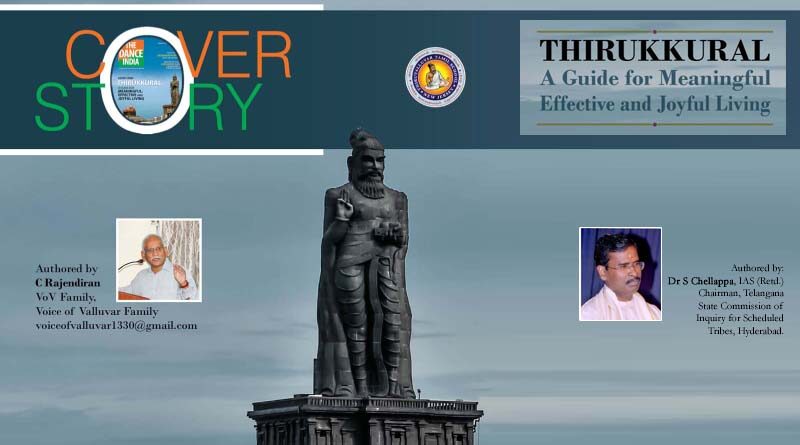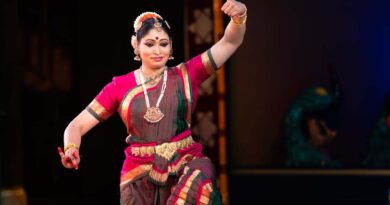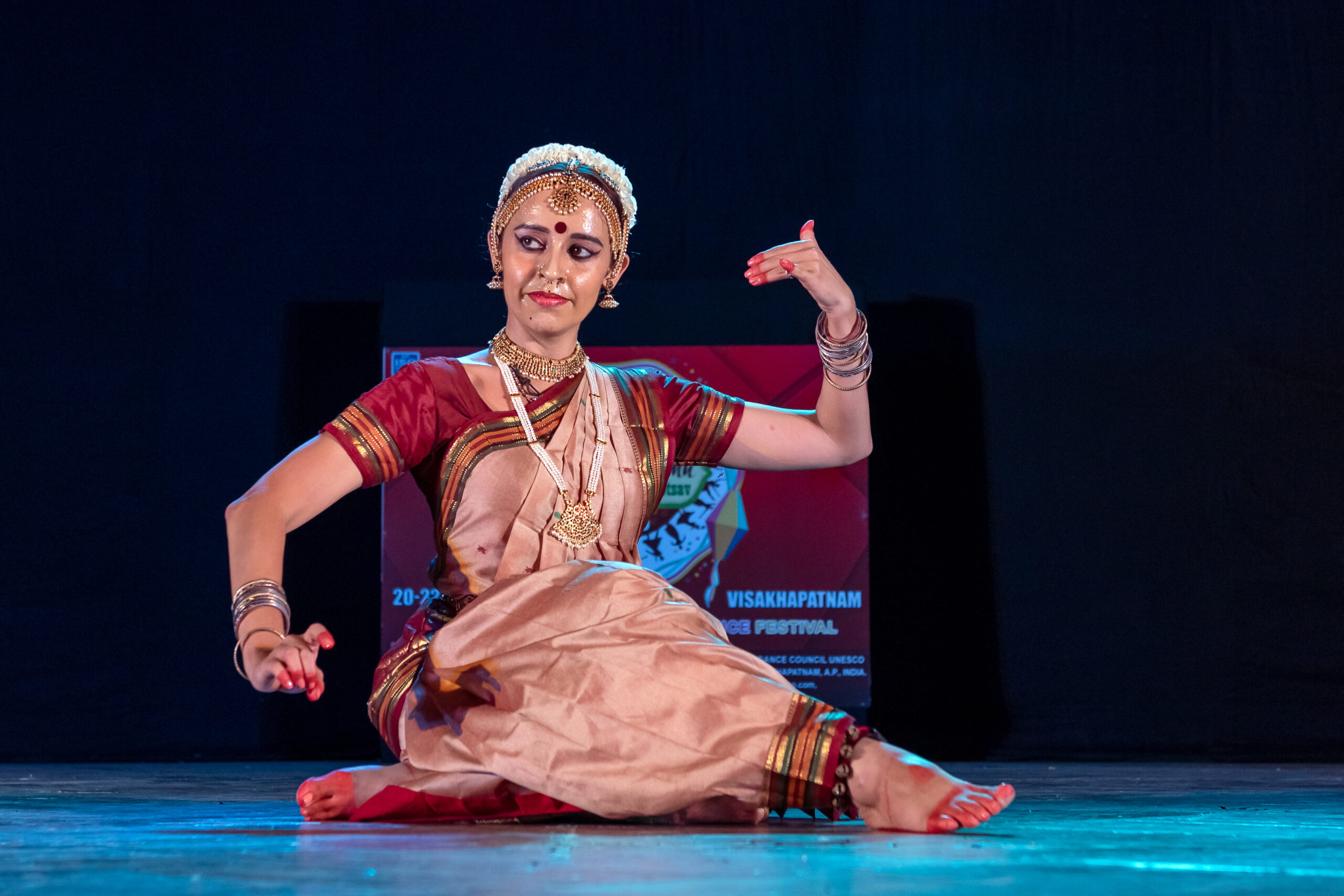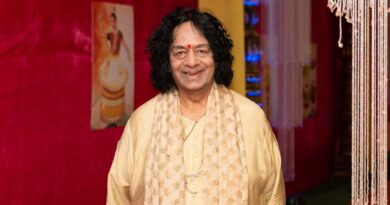A Social History of Thiruvalluvar’s Age
Text By : Dr S Chellappa , Dr Rajendreian
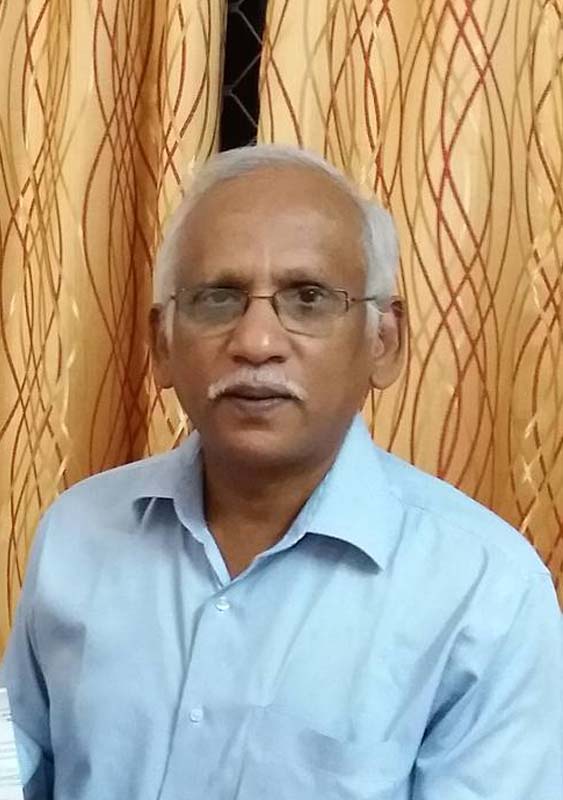
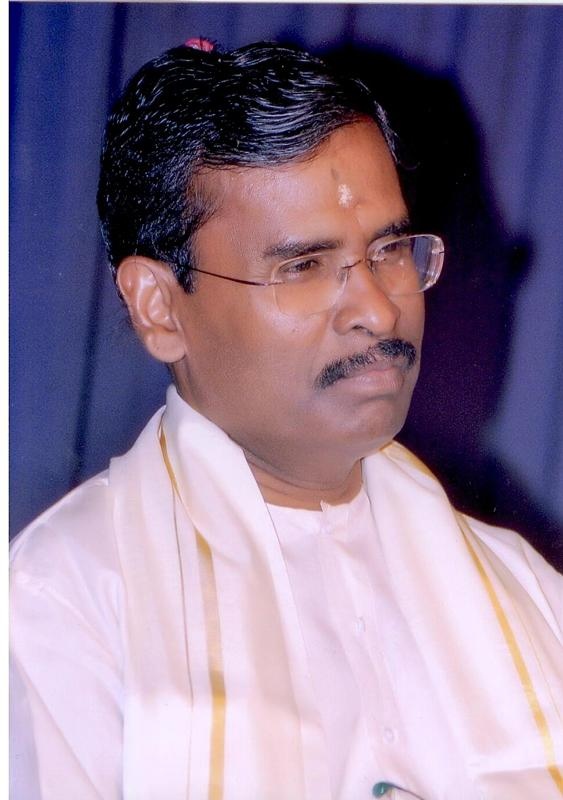
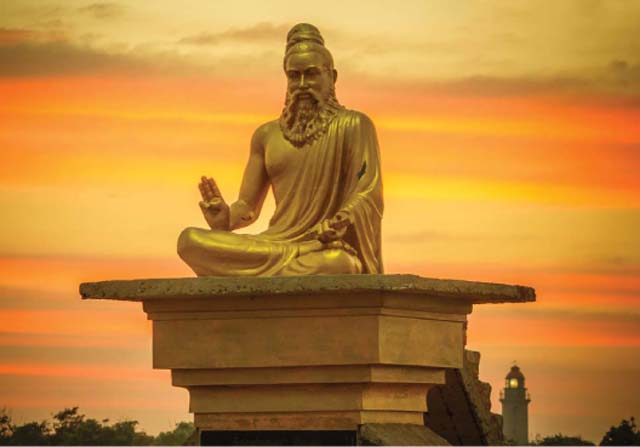
Thiruvalluvar, also popularly known as Valluvar, was a Tamil poet. Unlike other poets, he is a poet of all times. He belongs to the 3rd Sangam period in the history of Tamil literature, somewhere between Third Century and Second Century AD. But there are scholars who put him in the 7th or 8th Century AD. However the considered view of great Tamil Scholars like Maraimalai Adigal, Pavanar, Tamil Kudimagan etc. Valluvar belongs to the 3rd Sangam period. I conducted a sort of research on Kural as to know about his life and times. Valluvar presents a fair view of the geography, history, mythology and other cultural factors of the 3rd Sangam period. While dealing with Valluvar, aesthetically and objectively, TP Meenakshisundaram of 20th Century says that whether Valluvar really reflected whatever that happened in his time or he presented only an ideal society – one has to ponder over it in a deeper manner and there is no straight answer to it. I also echoed the views of TPM in my book titled ‘A Social History of the Thiruvalluvar’s Age’. I have come to the conclusion that it is very difficult to tell other historical aspects of his time. He followed a style called couplet, wherein he wrote a poem within seven words and the poem had to be within the permissible meter, should have symbols, imagery and also convey a meaning. In Tamil literature, his couplets are among the most quoted verses during his lifetime, during the Sangam period and even today. The couplets resemble the Japanese haiku poetry. Of course, haiku has three lines.
Talking about his personal life, a lot of stories were written, but they do not have any historical or biographical basis. These stories have come up just to establish the greatness of Valluvar. With regard to his greatness, there is a separate set of poems written by different poets called “Thiruvalluvar Malai”. This has a unique place in Tamil literature. No other author in the entire body of Tamil literature has such a pre-eminent place to have a separate set of poems on a book and its author. Getting back to his life and times, we can safely say that whatever he has portrayed echoed the time in which he lived. Because the basic principle of literature is that it is a mirror that reflects life. If we adopt this rule, then Kural gives us glimpses of life and history of his time. However, Valluvar, being an iconoclast and an idealist, should have enshrined his noble ideals too in the sacred Kurals. It is possible.
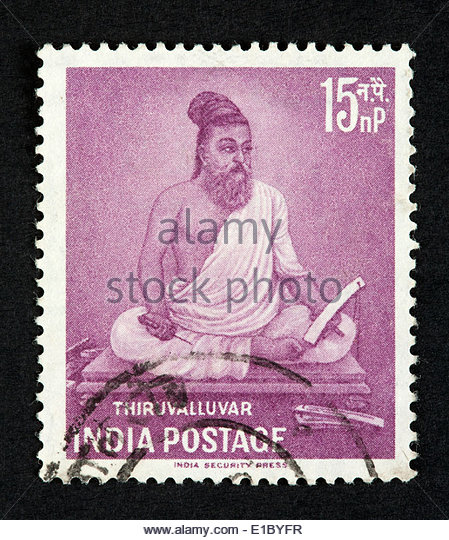
The Thirukkural may be the most quoted work during his life and for the last 2000 years. One of the reasons why great men quoted his work could be attributed to its simplicity – his Kurals are very easy to quote – Seven words conveying a beautiful meaning. His masterpiece is divided into three major parts; again it is a question: whether Tiruvalluvar divided his work into three parts or the subsequent critics who followed him made them into three parts. Late S. Kasi Pandian has written a treatise in this regard. Either way, there is no straight answer but over a period of time or in the last 2000 years, this division of the Thirukkural into three parts had been widely accepted by all the scholars. The first part deals with Virtue, the second part deals with Economics and the third part deals with Love and Family Life. Here, I must put forth a point. Some scholars say that Kural is an adoption of Dharma, Artha, Kama and Moksha philosophy of Sanskrit tradition. I strongly differ from that view because Valluvar believed that there is no such separate thing called Moksha. In one of his poems he says, “If you give up the quenching thirst of desire, that state in itself is heaven.” (Kural: 370) That is the main reason that he did not concentrate on Moksha. In the entire Sanskrit literature Dharma, Artha, Kama and Moksha play a crucial role but that is not found in the Tirukkural. So in following the virtue, you experience heaven, in following the pure principles of economics, you will feel moksha. In Tamil literature, love is divided into two major divisions – love before marriage and love after marriage. In one poem, Valluvar even questions the concept of Vykunta. He asks, “Will the pleasures of the world of the Lotus-eyed Vishnu equal the pleasures on the bosom of one’s sweetheart?” (Kural: 1103).
The Thirukkural does not appeal to any particular religion, but it is the other religious people who find their value system enshrined in Kural and hence Thiruvalluvar belongs to their religion. But it is a big question mark whether or not he belonged to that religion. Here you will find the religion of Lord Shiva, Lord Vishnu, Lord Buddha, and Lord Mahavira. Some of the Christian thinkers, who had done a lot of research, also say that some of the concepts of Thiruvalluvar were borrowed from the Bible. They say that because one of the disciples of Jesus Christ, St. Thomas by name came to India, up to Mylapur where Thiruvalluvar lived. As the tradition goes, Thiruvalluvar lived in Mylapur in Chennai and that is where we have Santhome Church; and it is believed that because of his contact with the Christianity, some of its principals also find a supreme place in the Thirukkural. One of the Kurals says, “What good is that good which does not return Good for Evil?” (Kural: 987) This literally brings in the words of Lord Jesus on the cross. So the Christians think that Thiruvalluvar has enshrined a lot of Christian concepts in the Kural. But nowhere Vallluvar openly says that he belongs to this sect or that sect. The Thirukkural stands as a supreme example of the Secular Sangam tradition. If you look into Tamil literature, however, you will find people and gods interacting with each other and maintaining the idyllic social harmony.
The reason for the popularity of the Thirukkural as said earlier is its simplicity. Today, the modern society is moving towards Haiku, as it is very easy to enjoy and remember. There was a time when people sat and listened to Kamban’s Ramayanam, which has 24000 verses. Now, because of our modern life and change in lifestyle, economy and culture, a lot of things have changed and people do not find time to concentrate on poetry and more so on long poetry. Now we are going towards Haiku, but it was amazingly a new thought in those days to write in couplets. What has become superior in the 21st century had been superior in the Sangam period itself and that is the greatness of the Thirukkural. And its appeal was to the humans in general and not only to the Tamils. Any common person could understand all the 1330 Kurals in 133 Chapters. The Tamil language used by Valluvar is amazingly chaste, and its style down-to-earth. In Tamil literature, if you take any great literary work, it is not addressed to any individual and it is always addressed to the world – beyond the boundaries of region, religion and language. In the Thirukkural, the first Kural itself is addressed to the world. He introduces God to the world in an interesting way. Perhaps, that kind of an expression may not be available in other literature – “As the alphabet in a language starts with ‘A’, the World starts with God.” (Kural: 1) Though it is the greatest of Tamil literary works, he never used the word Tamil in any of the Kurals. The appeal is not to the Tamils but to people who live in the whole world. It is because of this unique feature, the Thirukkural is translated into 34 languages of the world.
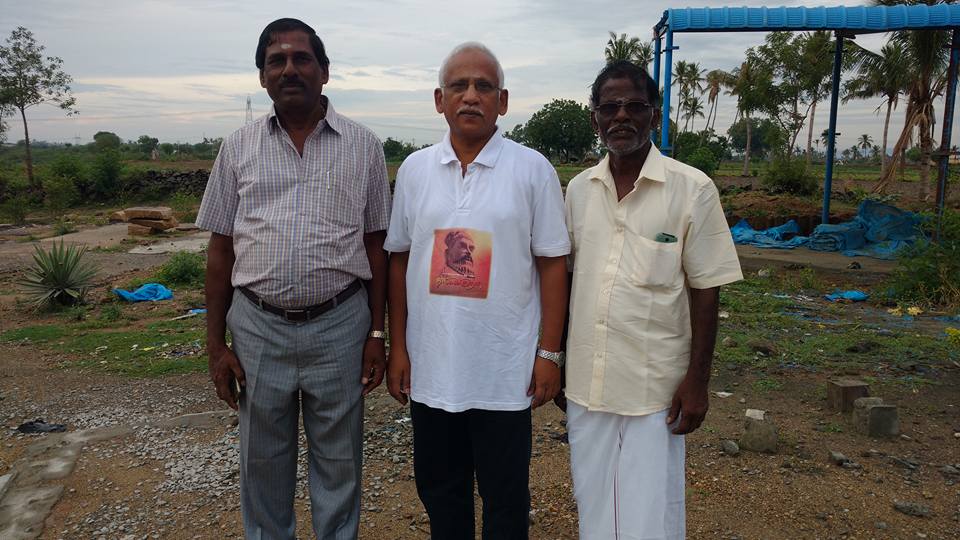
Irrespective of the times, the significance of the Kural has not been lost. I feel proud to say that one of the Kurals, “As far as birth is concerned, it is equal to all creatures” (Kural: 972), verbatim finds a place in the American Declaration of Independence and the same is echoed in Dr BR Ambedkar’s concept of Equality, in the Preamble to the Indian Constitution. Be it a Politician, a King or Common people, the respect they gave to Thirukkural was immense. At this juncture, the credit also should go to three or four people who were foreign scholars who propagated the Kural to the West. I remember them with respect and love – Albert Switzer, a Nobel Laureate, GU Pope and Father Beschi. In later days, irrespective of governments in Tamil Nadu, the Thirukkural was appreciated and given a prime place. DMK party in Tamil Nadu under the leadership of Former Chief Minister Karunanidhi went a step further and wrote the Kurals in all the state transport buses and constructed the historical Valluvar Kottam, a place of learning of Kural studies. Now it serves as an interesting monument in Chennai, which attracts lots of tourists both Indian and foreign. This is how the Thirukkural is being propagated through the modern governments. I appreciate the steps taken by former MP, Tarun Vijay to install the statue of Valluvar in Uttar Khand.
In 1960’s when I was in school, we had competition on reciting the Thirukkural. I was one of those children who took part in the recital of the Thirukkural and I was able to recite more than 150 Kurals. I took part and won the first prize. Later on, in 1978, I am humbled to put forth that I was the first IAS officer in Tamil Nadu to write the IAS examination in Tamil and got selected in the UPSC examination. It was my constant reading of the Thirukkural that made me read other literature and it also made me select English literature. It helped me to get in touch with some of the best authors in the world.
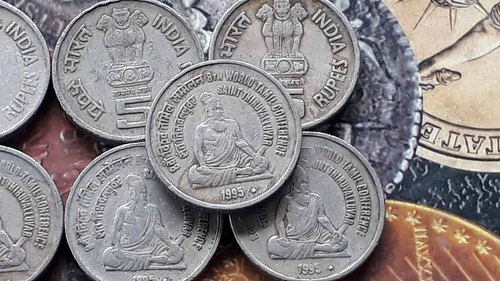
‘A Social History of Thiruvalluvar’s Age’ is the title of my book. I have not taken other works as a source for my research. I have constructed the social history purely from the internal evidences and APJ Abdul Kalam appreciated it. According to the Tamils, the Tamil land was divided into 5 major divisions – Kurunji, dealing with the life and culture of people living in the hilly region, Mullai, dealing with the life and culture of people living in the forests, Marudam, dealing with the life and culture of people living in the plains, Neydhal, dealing with the life and culture of people living near the seashore and Palai, dealing with the life and culture of people living in parched wastelands. It is to be understood that the Tamil country did not have permanent “Palai” lands. Whenever there was a change in the environment of the Mullai and Kurunji, Palai came into being. It was a temporary phenomenon. All these divisions had different attributes like gods, music, animals, time, trees etc. Similarly, the king followed neither capitalism nor communism. However, Thiruvalluvar presented individual capitalism and because people were following virtues, they were supposed to practice charity. In one of the poems, Valluvar says, “Wealth in the hands of a good man is like a tree laden with fruit in the midst of a village” (Kural: 216). Valluvar’s main aim was to show that man throughout his life should practise virtue, and make wealth through virtue. Love and family life are common to all human beings.Valluvar presented a true cross-section of the life of his times and even sowed seeds of the modern concept of Gender justice 2000 years ago. Valluvar was against casteism and propagated that birth is equal to all, a great departure from the Sanskrit tradition.
A Social History of Thiruvalluvar’s Age
Text : Dr S Chellappa
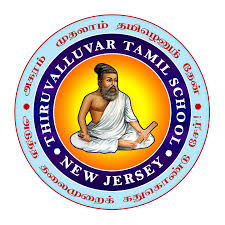
Thiruvalluvar, also popularly known as Valluvar, was a Tamil poet. Unlike other poets, he is a poet of all times. He belongs to the 3rd Sangam period in the history of Tamil literature, somewhere between Third Century and Second Century AD. But there are scholars who put him in the 7th or 8th Century AD. However the considered view of great Tamil Scholars like Maraimalai Adigal, Pavanar, Tamil Kudimagan etc. Valluvar belongs to the 3rd Sangam period. I conducted a sort of research on Kural as to know about his life and times. Valluvar presents a fair view of the geography, history, mythology and other cultural factors of the 3rd Sangam period. While dealing with Valluvar, aesthetically and objectively, TP Meenakshisundaram of 20th Century says that whether Valluvar really reflected whatever that happened in his time or he presented only an ideal society – one has to ponder over it in a deeper manner and there is no straight answer to it. I also echoed the views of TPM in my book titled ‘A Social History of the Thiruvalluvar’s Age’. I have come to the conclusion that it is very difficult to tell other historical aspects of his time. He followed a style called couplet, wherein he wrote a poem within seven words and the poem had to be within the permissible meter, should have symbols, imagery and also convey a meaning. In Tamil literature, his couplets are among the most quoted verses during his lifetime, during the Sangam period and even today. The couplets resemble the Japanese haiku poetry. Of course, haiku has three lines.
Talking about his personal life, a lot of stories were written, but they do not have any historical or biographical basis. These stories have come up just to establish the greatness of Valluvar. With regard to his greatness, there is a separate set of poems written by different poets called “Thiruvalluvar Malai”. This has a unique place in Tamil literature. No other author in the entire body of Tamil literature has such a pre-eminent place to have a separate set of poems on a book and its author. Getting back to his life and times, we can safely say that whatever he has portrayed echoed the time in which he lived. Because the basic principle of literature is that it is a mirror that reflects life. If we adopt this rule, then Kural gives us glimpses of life and history of his time. However, Valluvar, being an iconoclast and an idealist, should have enshrined his noble ideals too in the sacred Kurals. It is possible.
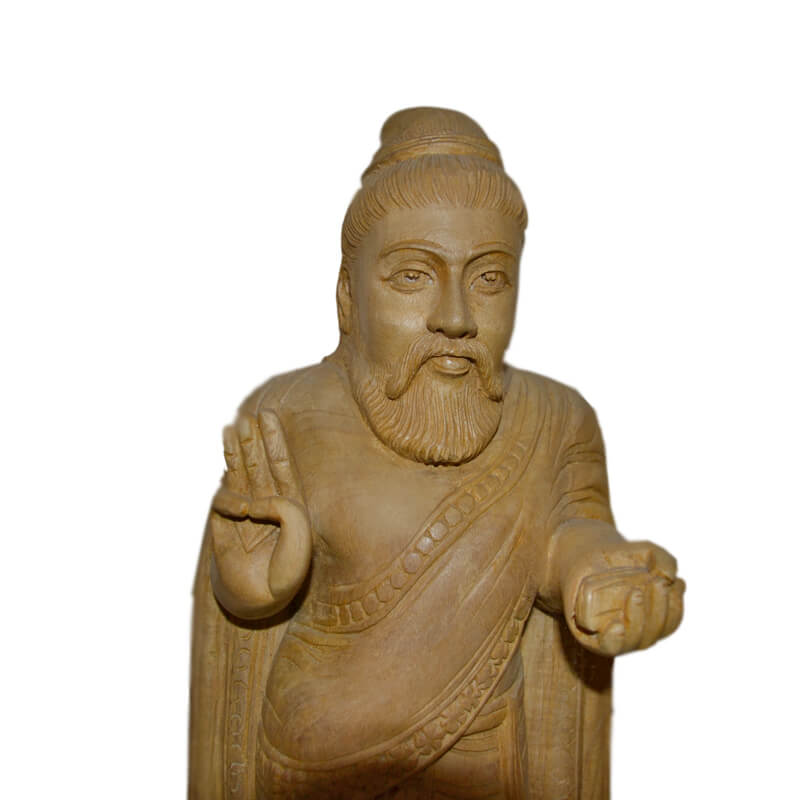
The Thirukkural may be the most quoted work during his life and for the last 2000 years. One of the reasons why great men quoted his work could be attributed to its simplicity – his Kurals are very easy to quote – Seven words conveying a beautiful meaning. His masterpiece is divided into three major parts; again it is a question: whether Tiruvalluvar divided his work into three parts or the subsequent critics who followed him made them into three parts. Late S. Kasi Pandian has written a treatise in this regard. Either way, there is no straight answer but over a period of time or in the last 2000 years, this division of the Thirukkural into three parts had been widely accepted by all the scholars. The first part deals with Virtue, the second part deals with Economics and the third part deals with Love and Family Life. Here, I must put forth a point. Some scholars say that Kural is an adoption of Dharma, Artha, Kama and Moksha philosophy of Sanskrit tradition. I strongly differ from that view because Valluvar believed that there is no such separate thing called Moksha. In one of his poems he says, “If you give up the quenching thirst of desire, that state in itself is heaven.” (Kural: 370) That is the main reason that he did not concentrate on Moksha. In the entire Sanskrit literature Dharma, Artha, Kama and Moksha play a crucial role but that is not found in the Tirukkural. So in following the virtue, you experience heaven, in following the pure principles of economics, you will feel moksha. In Tamil literature, love is divided into two major divisions – love before marriage and love after marriage.
In one poem, Valluvar even questions the concept of Vykunta. He asks, “Will the pleasures of the world of the Lotus-eyed Vishnu equal the pleasures on the bosom of one’s sweetheart?” (Kural: 1103).
The Thirukkural does not appeal to any particular religion, but it is the other religious people who find their value system enshrined in Kural and hence Thiruvalluvar belongs to their religion. But it is a big question mark whether or not he belonged to that religion. Here you will find the religion of Lord Shiva, Lord Vishnu, Lord Buddha, and Lord Mahavira. Some of the Christian thinkers, who had done a lot of research, also say that some of the concepts of Thiruvalluvar were borrowed from the Bible. They say that because one of the disciples of Jesus Christ, St. Thomas by name came to India, up to Mylapur where Thiruvalluvar lived. As the tradition goes, Thiruvalluvar lived in Mylapur in Chennai and that is where we have Santhome Church; and it is believed that because of his contact with the Christianity, some of its principals also find a supreme place in the Thirukkural. One of the Kurals says, “What good is that good which does not return Good for Evil?” (Kural: 987) This literally brings in the words of Lord Jesus on the cross. So the Christians think that Thiruvalluvar has enshrined a lot of Christian concepts in the Kural. But nowhere Vallluvar openly says that he belongs to this sect or that sect. The Thirukkural stands as a supreme example of the Secular Sangam tradition. If you look into Tamil literature, however, you will find people and gods interacting with each other and maintaining the idyllic social harmony.
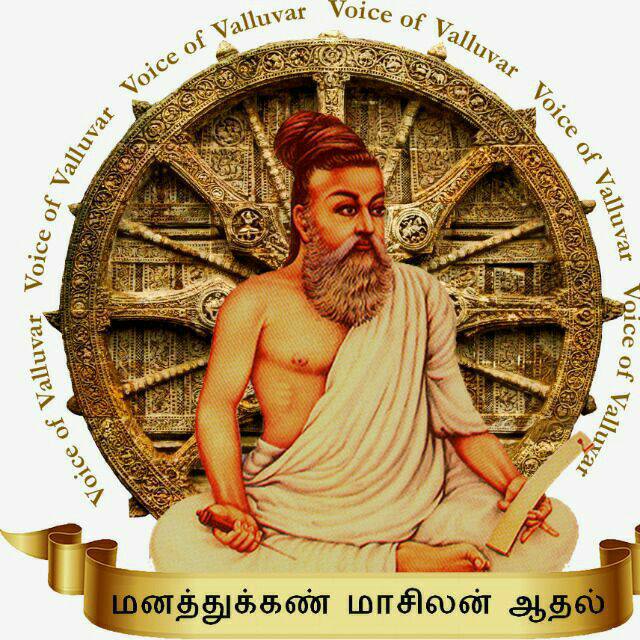
The reason for the popularity of the Thirukkural as said earlier is its simplicity. Today, the modern society is moving towards Haiku, as it is very easy to enjoy and remember. There was a time when people sat and listened to Kamban’s Ramayanam, which has 24000 verses. Now, because of our modern life and change in lifestyle, economy and culture, a lot of things have changed and people do not find time to concentrate on poetry and more so on long poetry. Now we are going towards Haiku, but it was amazingly a new thought in those days to write in couplets. What has become superior in the 21st century had been superior in the Sangam period itself and that is the greatness of the Thirukkural. And its appeal was to the humans in general and not only to the Tamils. Any common person could understand all the 1330 Kurals in 133 Chapters. The Tamil language used by Valluvar is amazingly chaste, and its style down-to-earth. In Tamil literature, if you take any great literary work, it is not addressed to any individual and it is always addressed to the world – beyond the boundaries of region, religion and language. In the Thirukkural, the first Kural itself is addressed to the world. He introduces God to the world in an interesting way. Perhaps, that kind of an expression may not be available in other literature – “As the alphabet in a language starts with ‘A’, the World starts with God.” (Kural: 1) Though it is the greatest of Tamil literary works, he never used the word Tamil in any of the Kurals. The appeal is not to the Tamils but to people who live in the whole world.
It is because of this unique feature, the Thirukkural is translated into 34 languages of the world.
Irrespective of the times, the significance of the Kural has not been lost. I feel proud to say that one of the Kurals, “As far as birth is concerned, it is equal to all creatures” (Kural: 972), verbatim finds a place in the American Declaration of Independence and the same is echoed in Dr BR Ambedkar’s concept of Equality, in the Preamble to the Indian Constitution. Be it a Politician, a King or Common people, the respect they gave to Thirukkural was immense. At this juncture, the credit also should go to three or four people who were foreign scholars who propagated the Kural to the West. I remember them with respect and love – Albert Switzer, a Nobel Laureate, GU Pope and Father Beschi. In later days, irrespective of governments in Tamil Nadu, the Thirukkural was appreciated and given a prime place. DMK party in Tamil Nadu under the leadership of Former Chief Minister Karunanidhi went a step further and wrote the Kurals in all the state transport buses and constructed the historical Valluvar Kottam, a place of learning of Kural studies. Now it serves as an interesting monument in Chennai, which attracts lots of tourists both Indian and foreign. This is how the Thirukkural is being propagated through the modern governments. I appreciate the steps taken by former MP, Tarun Vijay to install the statue of Valluvar in Uttar Khand.
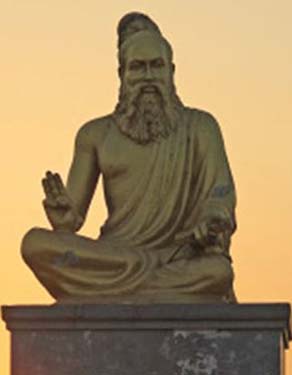
In 1960’s when I was in school, we had competition on reciting the Thirukkural. I was one of those children who took part in the recital of the Thirukkural and I was able to recite more than 150 Kurals. I took part and won the first prize. Later on, in 1978, I am humbled to put forth that I was the first IAS officer in Tamil Nadu to write the IAS examination in Tamil and got selected in the UPSC examination. It was my constant reading of the Thirukkural that made me read other literature and it also made me select English literature. It helped me to get in touch with some of the best authors in the world.‘A Social History of Thiruvalluvar’s Age’ is the title of my book. I have not taken other works as a source for my research. I have constructed the social history purely from the internal evidences and APJ Abdul Kalam appreciated it. According to the Tamils, the Tamil land was divided into 5 major divisions – Kurunji, dealing with the life and culture of people living in the hilly region, Mullai, dealing with the life and culture of people living in the forests, Marudam, dealing with the life and culture of people living in the plains, Neydhal, dealing with the life and culture of people living near the seashore and Palai, dealing with the life and culture of people living in parched wastelands. It is to be understood that the Tamil country did not have permanent “Palai” lands. Whenever there was a change in the environment of the Mullai and Kurunji, Palai came into being. It was a temporary phenomenon. All these divisions had different attributes like gods, music, animals, time, trees etc. Similarly, the king followed neither capitalism nor communism. However, Thiruvalluvar presented individual capitalism and because people were following virtues, they were supposed to practice charity. In one of the poems, Valluvar says, “Wealth in the hands of a good man is like a tree laden with fruit in the midst of a village” (Kural: 216). Valluvar’s main aim was to show that man throughout his life should practise virtue, and make wealth through virtue. Love and family life are common to all human beings.
Valluvar presented a true cross-section of the life of his times and even sowed seeds of the modern concept of Gender justice 2000 years ago. Valluvar was against casteism and propagated that birth is equal to all, a great departure from the Sanskrit tradition.

